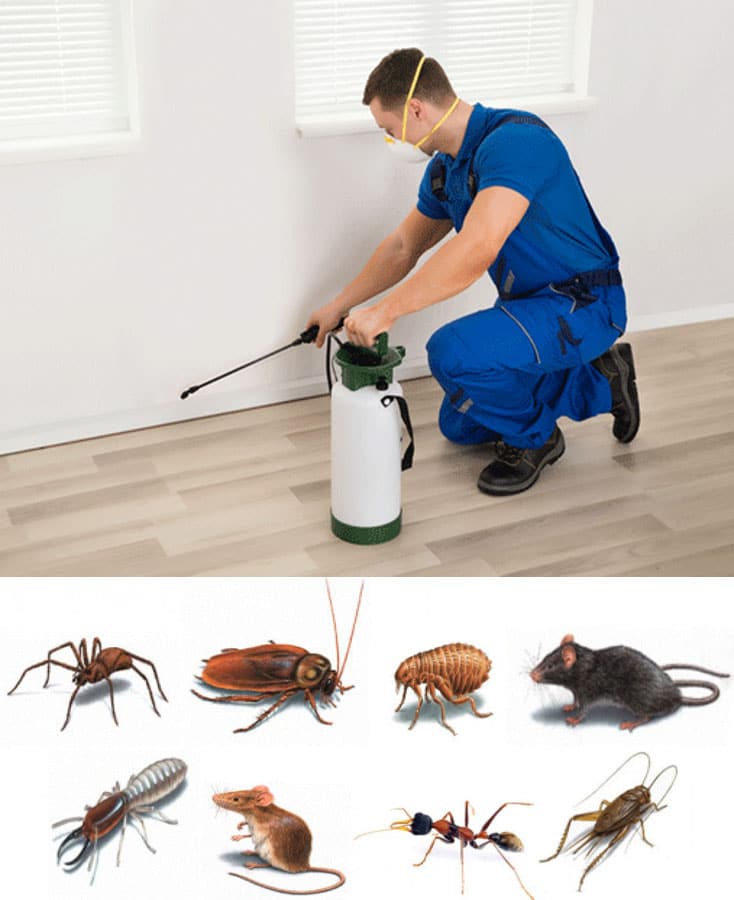A1 Bed Bug Exterminator Charlotte - Specialized Bed Bug Removal
Wiki Article
Bed Bug Therapy Malfunction: Contrasting Chemical Vs. Non-Chemical Solutions
In the world of bug control, specifically when managing the relentless problem of bed insects, the selection in between chemical and non-chemical therapy services can be a critical one. Both techniques supply distinctive advantages and disadvantages, affecting aspects such as performance, safety and security considerations, and total expense. By taking a look at the nuanced information of each method, a clearer understanding of which path to go after in addressing a bed insect invasion can be obtained.Effectiveness of Chemical Therapies
Chemical therapies for bed insect problems have actually been commonly identified for their rapid and powerful efficacy in removing these pests. When thinking about the performance of chemical therapies, it is critical to recognize that they can give a extensive and fast remedy to a bed pest issue. Specialist pest control men commonly rely on insecticides to target bed bugs at different stages of their life process, including fairies, adults, and eggs. These chemicals usually function by disrupting the bed insects' nerve system, resulting in paralysis and eventual fatality.Moreover, chemical therapies have the benefit of using residual impacts, suggesting that they can remain to eliminate bed bugs also after the initial application. This residual action is especially advantageous in combating any prospective re-infestations. Furthermore, the rapid activity of chemical treatments can bring alleviation to individuals facing severe bed pest problems, allowing them to restore control of their home quickly.
Security Interest In Chemical Solutions
One critical element that calls for careful consideration when making use of chemical options for bed bug therapy is making sure the security of owners and the atmosphere. While chemical treatments can be reliable in eliminating bed insects, they might present risks if not taken care of properly. Among the primary safety interest in chemical options is the potential damage they can create to human wellness. Exposure to particular chemicals made use of in bed insect therapies can bring about respiratory system problems, skin irritation, or other adverse reactions, especially in individuals with pre-existing conditions or level of sensitivities. In addition, inappropriate application or dosage of chemical pesticides can lead to toxic residues lingering in the treated location, positioning long-term health and wellness risks to passengers.In addition, the environmental influence of chemical remedies is an additional substantial factor to consider. Some chemicals used in bed bug treatments might be unsafe to advantageous bugs, wildlife, and communities if they seep into the soil or water supply. It is vital to make use of chemical treatments sensibly, following security guidelines, and thinking about much less harmful choices to minimize these threats and make sure the risk-free and effective management of bed insect problems.
Benefits of Non-Chemical Techniques
Taking into consideration the potential safety and security issues and environmental impact linked with chemical options for bed insect therapy, discovering non-chemical techniques provides an appealing option with a number of distinct advantages. Non-chemical therapies are ecologically friendly, as they do not add to air or water pollution, making them a lasting selection for insect control.Additionally, non-chemical solutions can be effective in targeting bed pests, including hard-to-reach locations where chemical therapies may not permeate - A1 exterminator charlotte nc. Methods such as heat treatment, vacuuming, heavy steam cleaning, and mattress coverings offer comprehensive removal without the use of dangerous chemicals.
Limitations of Non-Chemical Treatments

In addition, non-chemical treatments commonly require multiple applications to accomplish effective removal. This can be time-consuming and may not always assure complete removal of all bed bugs and their eggs, particularly in hard-to-reach or surprise locations.
Moreover, the success of non-chemical therapies greatly counts on proper implementation and thoroughness, which can be testing for people without professional proficiency. Inadequate application of non-chemical techniques might lead to incomplete removal, causing persistent infestations and the requirement for additional therapies.
As a result, while non-chemical treatments have their advantages, it is vital to acknowledge these limitations and consider them when determining one of the most efficient technique for taking care of bed insect problems.
Expense Comparison: Chemical Vs. Non-Chemical Options
Provided the restrictions connected with non-chemical treatments, a vital element to assess in the context of bed pest administration is the cost contrast in between chemical and non-chemical options. Chemical therapies generally new home pest control include the application of pesticides by professionals, which can vary from $250 to $900 per room, depending upon the severity of the problem and the size of the location to be treated. In comparison, non-chemical treatments like heat treatment or steam can be more costly, with expenses varying from $1,000 to $6,000 for a whole home. While the first price of chemical therapies may appear lower, numerous therapies might be needed to totally eliminate the invasion, possibly enhancing the general expense. On the various other hand, non-chemical choices may give a much more lasting and environment-friendly service, pest spray companies although they can be cost-prohibitive for some people. Eventually, when thinking about the price of bed pest therapy options, it is crucial to consider the upfront expenditures against the performance and lasting sustainability of the selected approach.Verdict

Considering the prospective safety problems and environmental impact connected with chemical services for bed insect therapy, discovering non-chemical techniques presents a promising option with several unique advantages.Offered the constraints associated with non-chemical treatments, an important element to review in the context of bed insect monitoring is the price contrast in between chemical and non-chemical choices. In comparison, non-chemical therapies like warm treatment or vapor can be much more costly, with costs ranging from $1,000 great post to read to $6,000 for an entire home. While the first cost of chemical therapies may appear lower, several therapies may be needed to fully eliminate the infestation, possibly raising the overall price.In verdict, when contrasting chemical and non-chemical bed pest treatment choices, it is vital to consider efficiency, security, benefits, constraints, and expense.
Report this wiki page